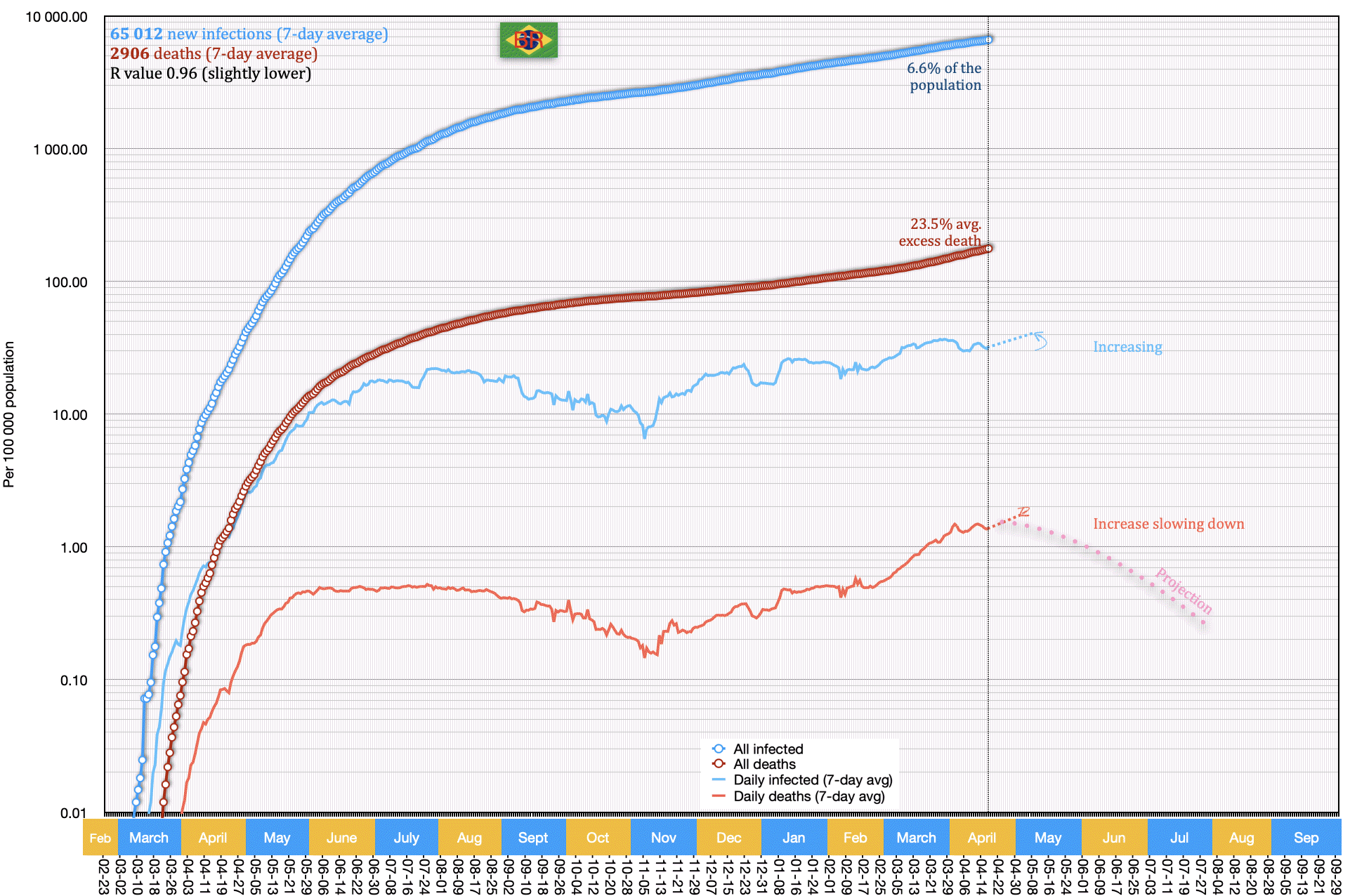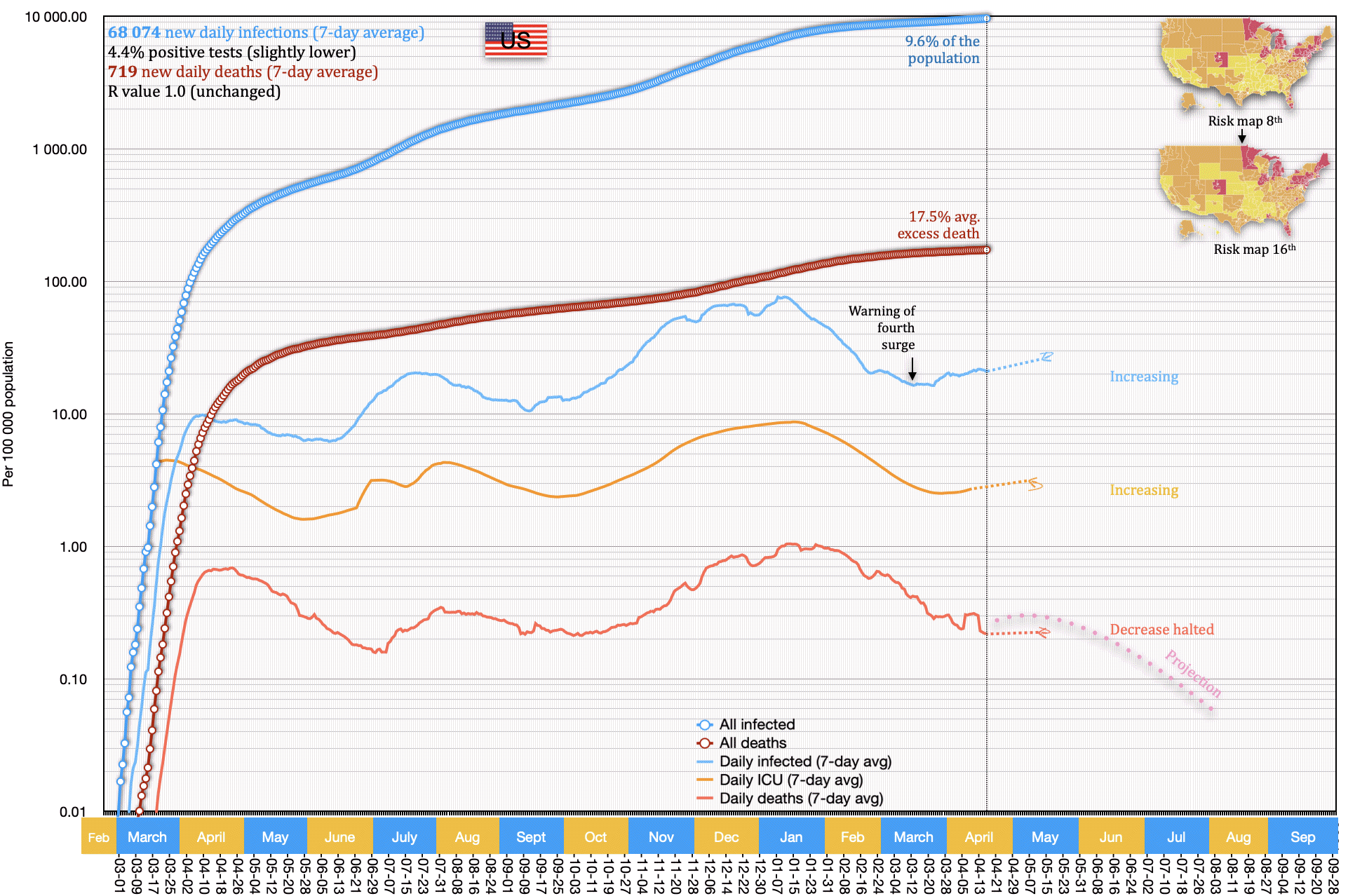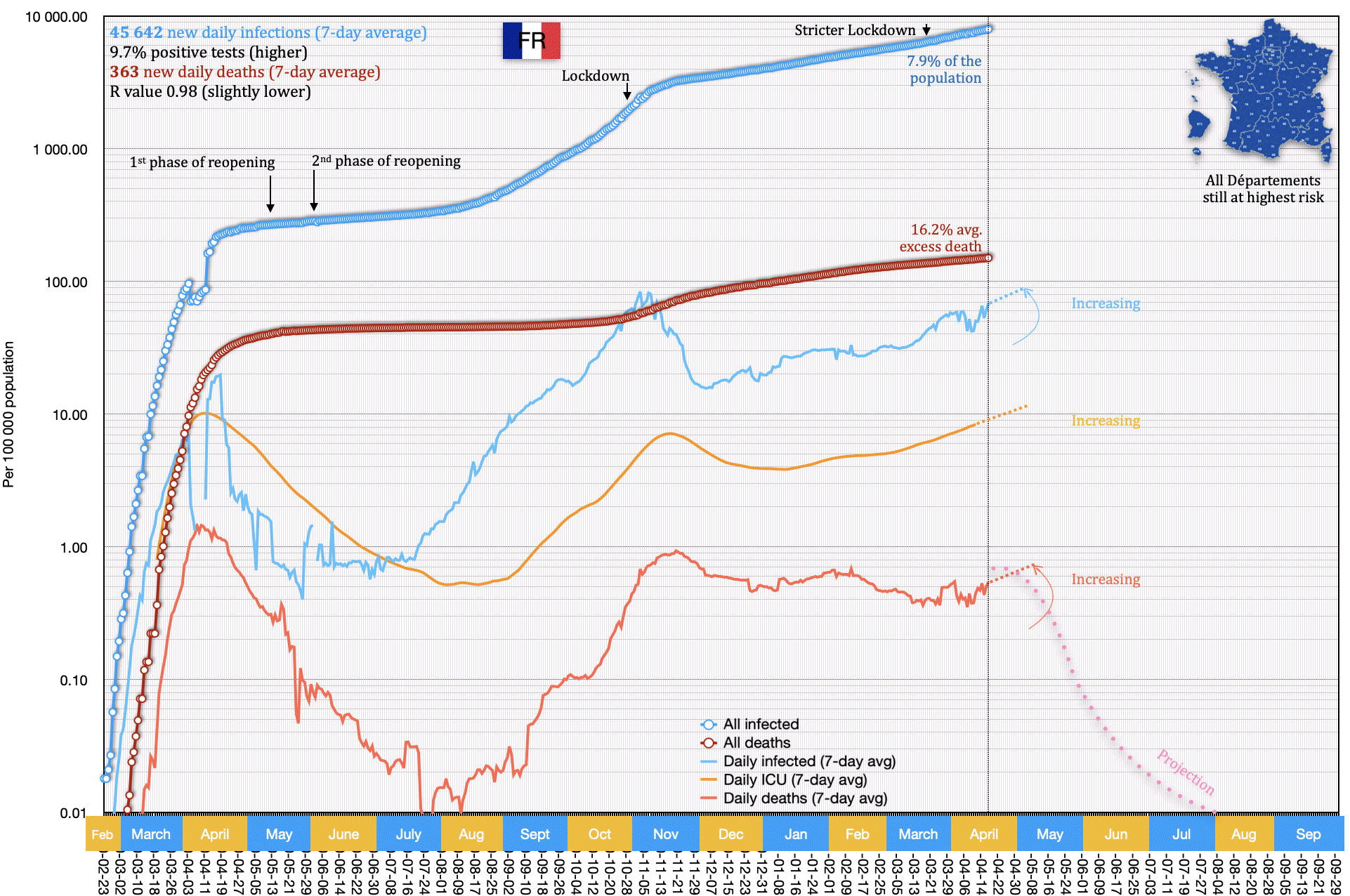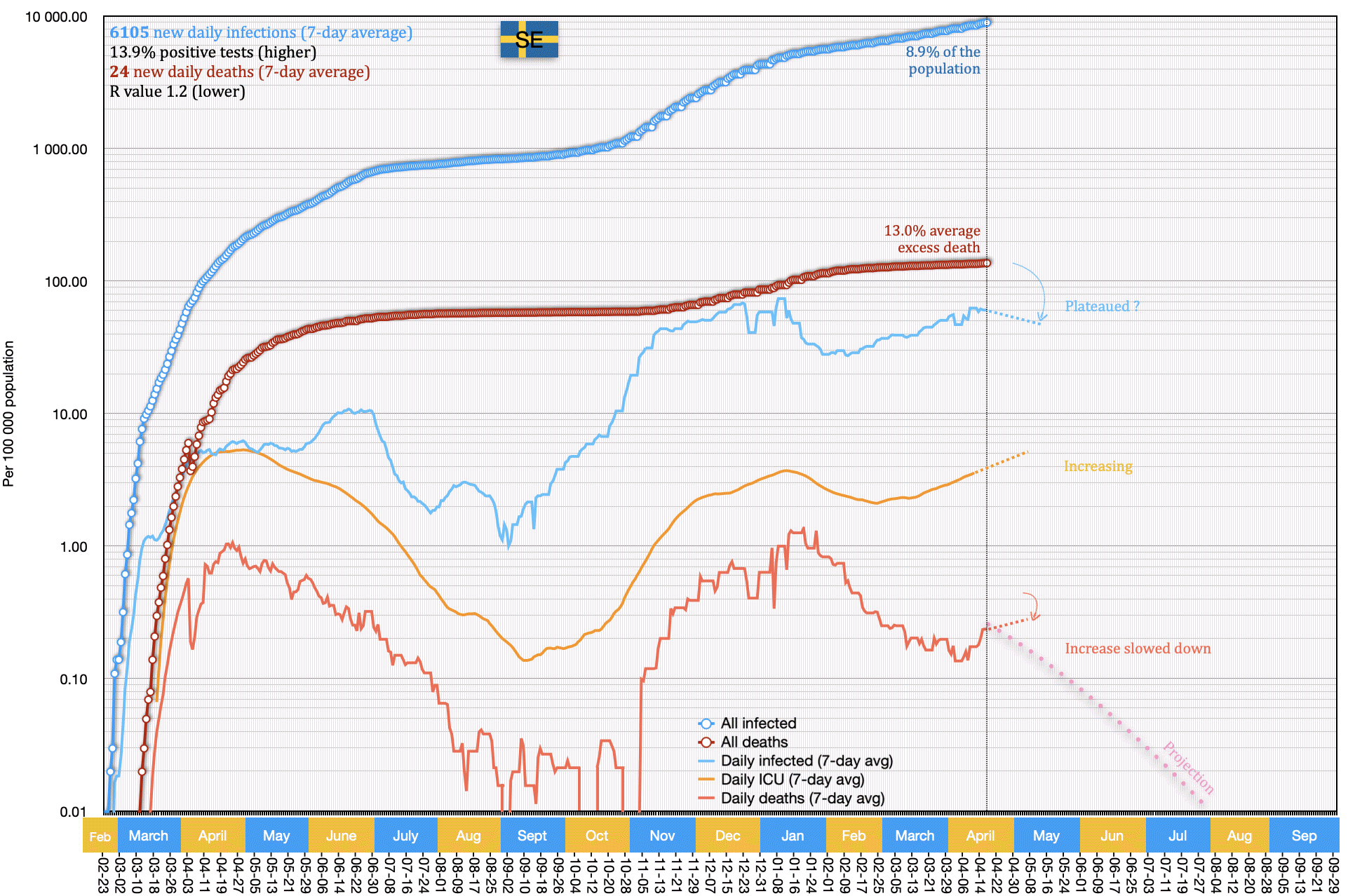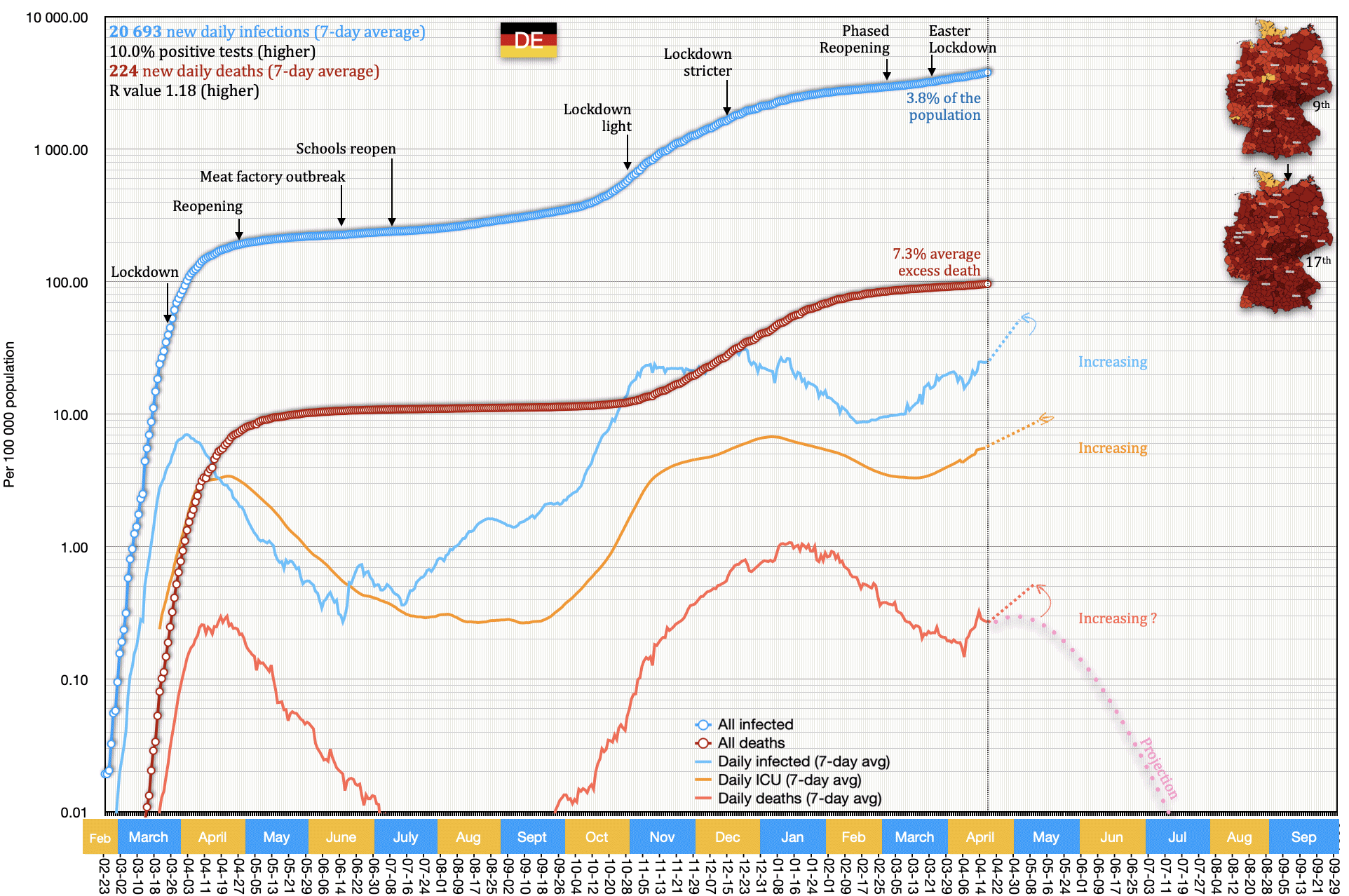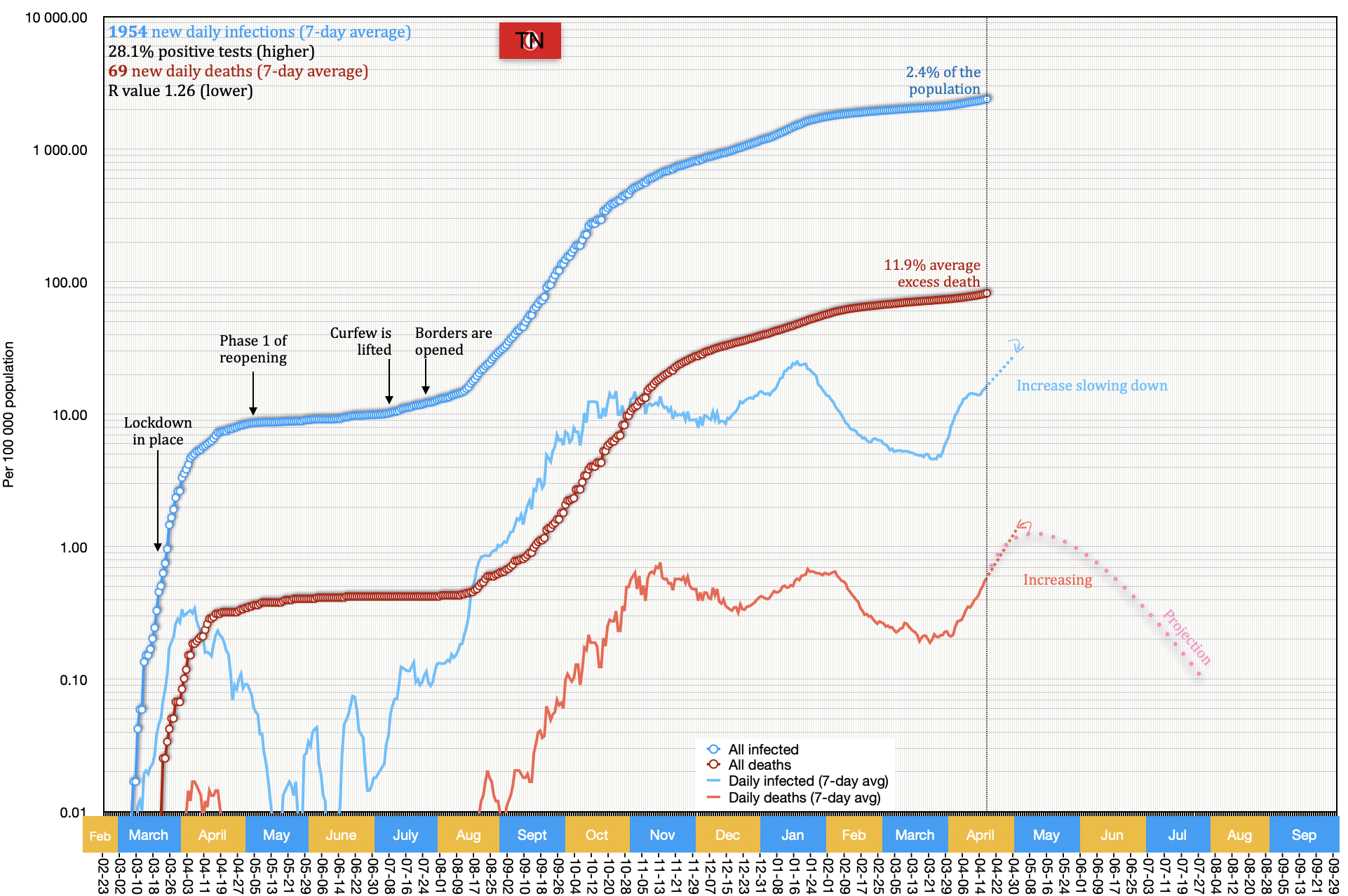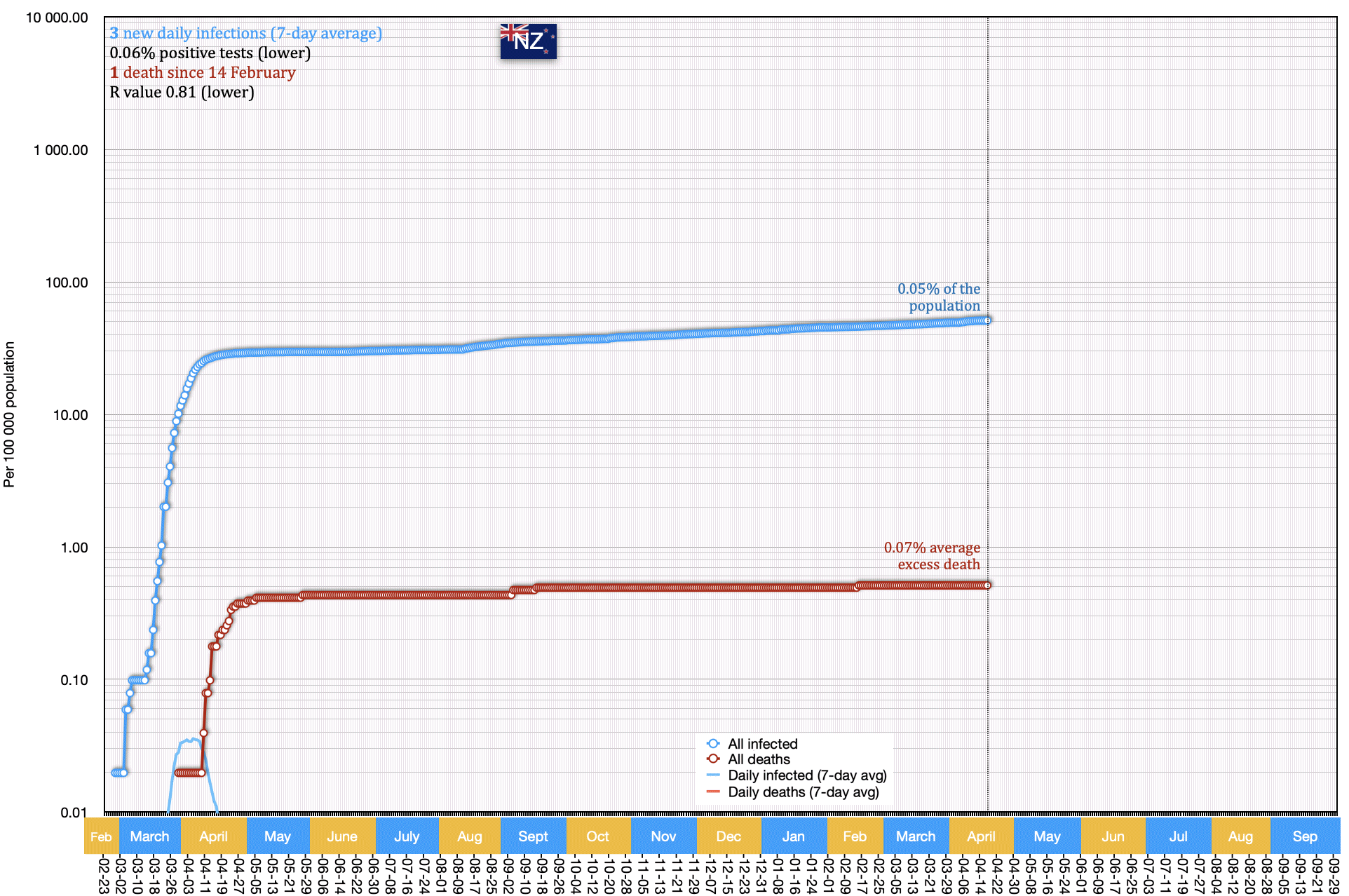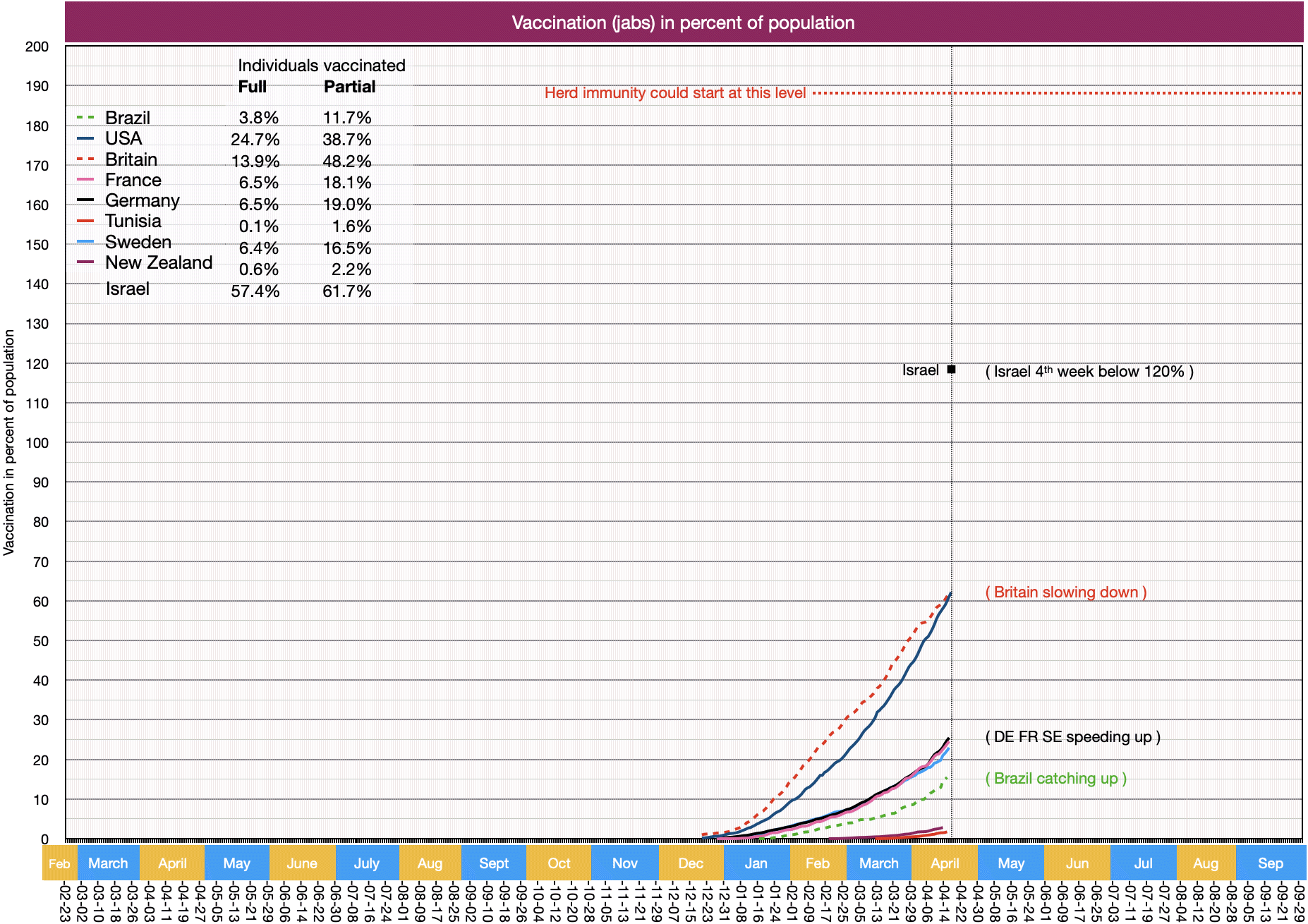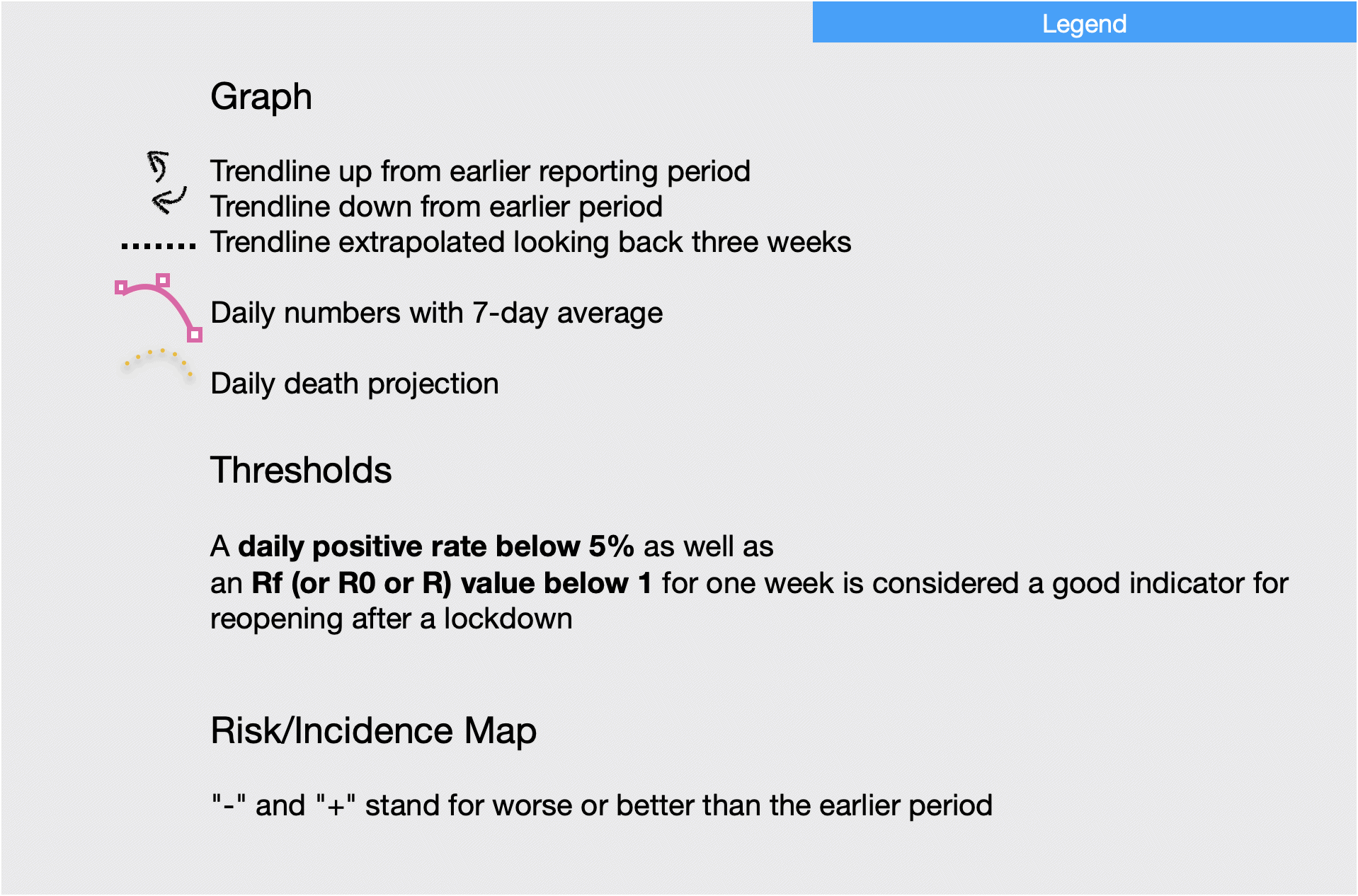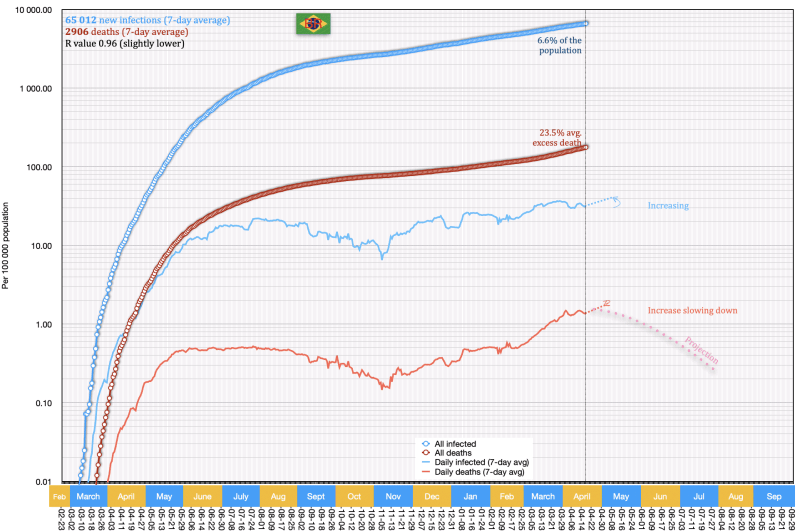 Brazil – 17 April
Brazil – 17 April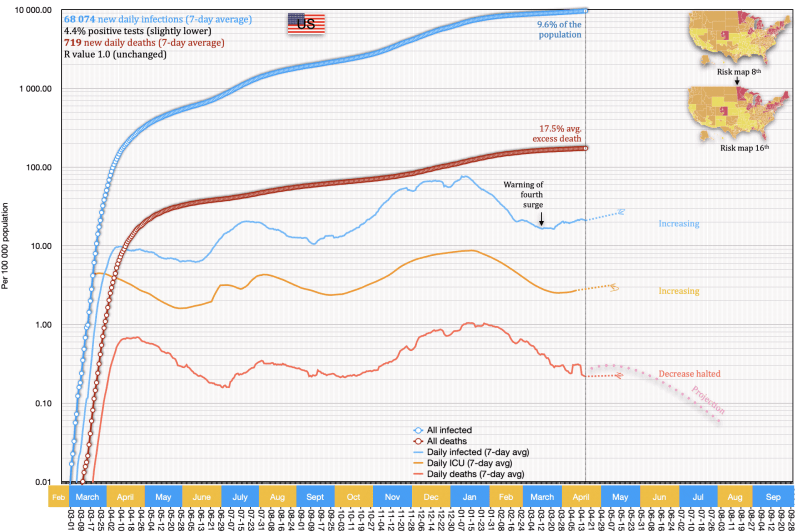 USA – 17 April
USA – 17 April Washington State – 16 April
Washington State – 16 April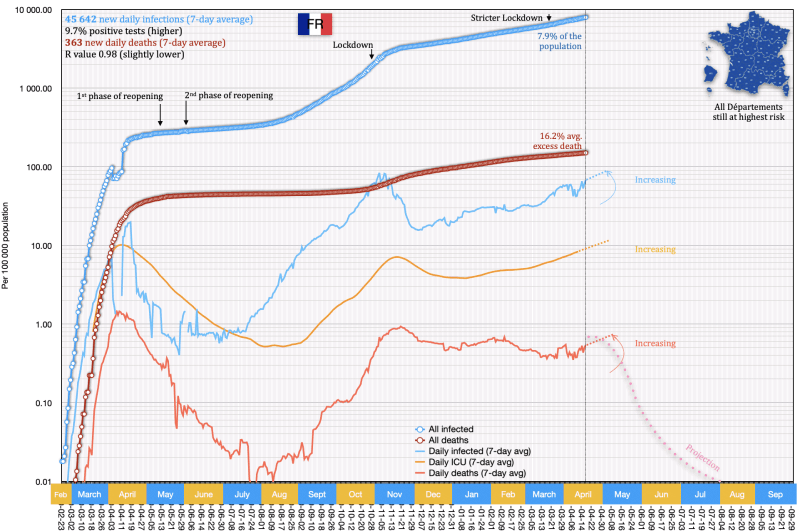 France – 17 April
France – 17 April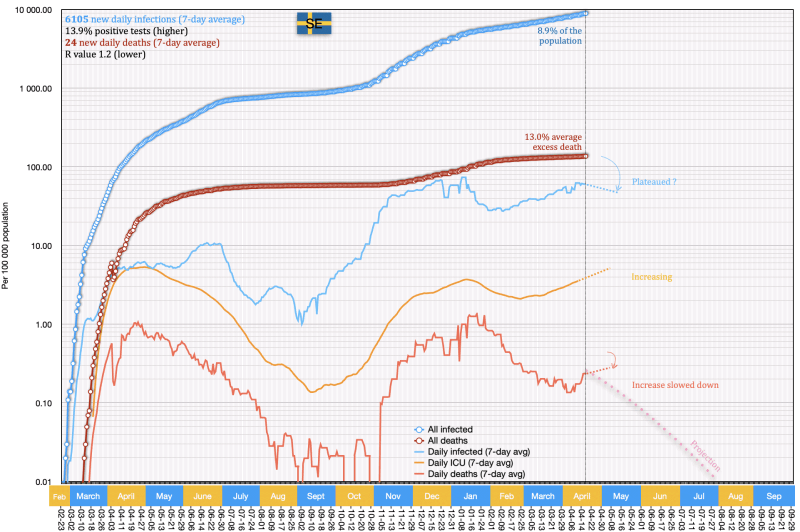 Sweden – 17 April
Sweden – 17 April Britain – 17 April
Britain – 17 April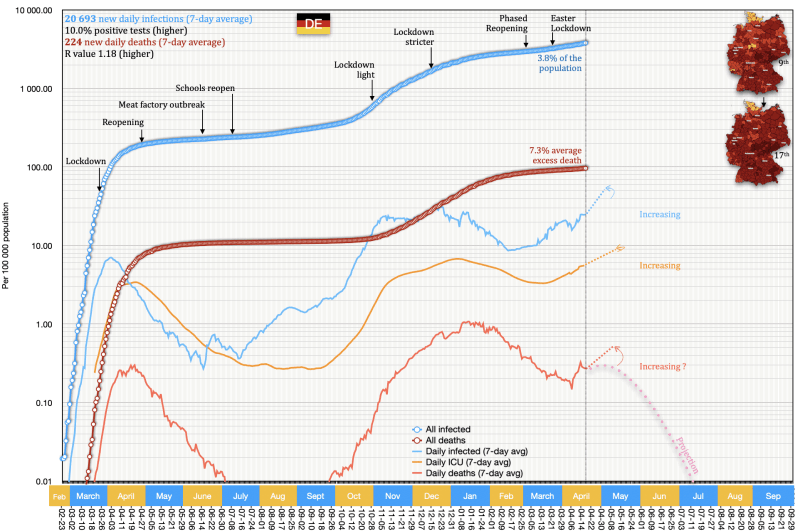 Germany – 17 April
Germany – 17 April Rhein-Neckar – 17 April
Rhein-Neckar – 17 April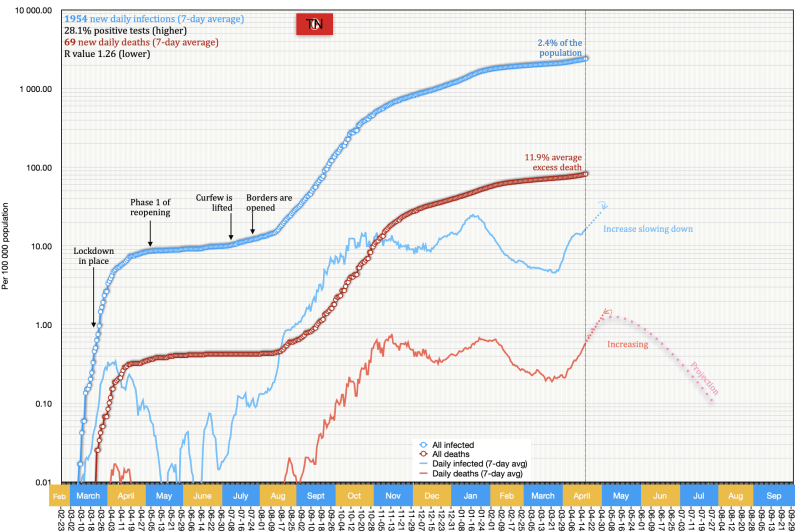 Tunisia – 17 April
Tunisia – 17 April New Zealand – 17 April
New Zealand – 17 April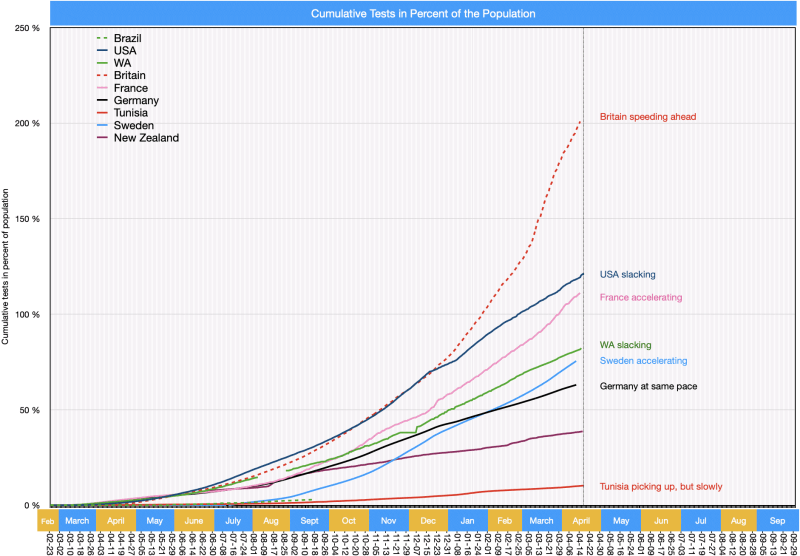 Testing Rate – 17 April
Testing Rate – 17 April Daily Positive Rate – 17 April
Daily Positive Rate – 17 April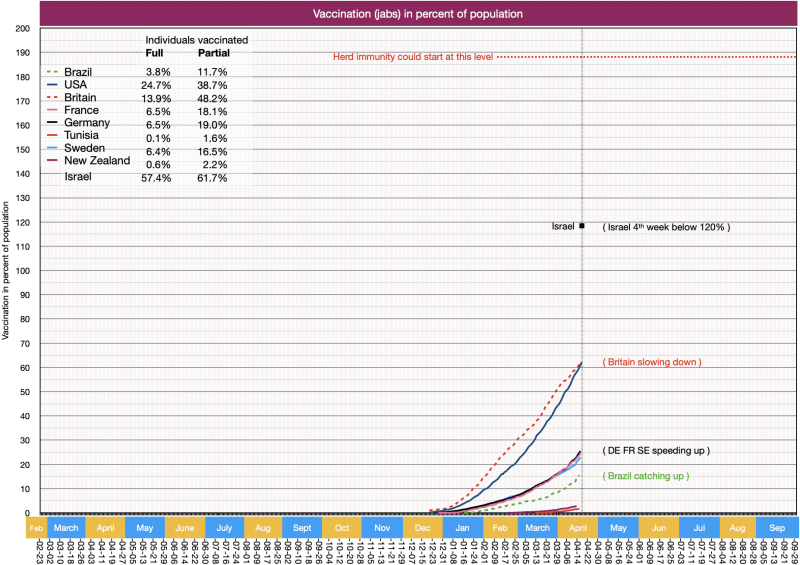 Vaccinations – 17 April
Vaccinations – 17 April Legend
Legend